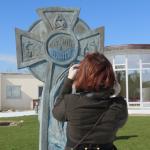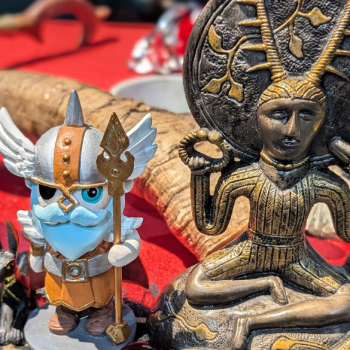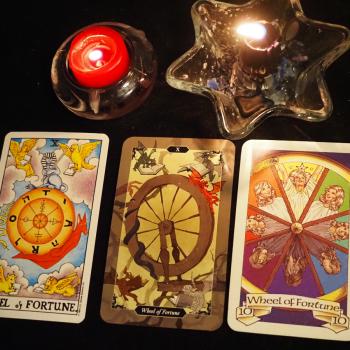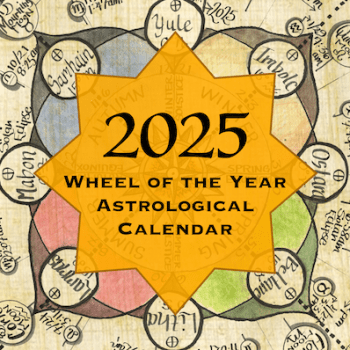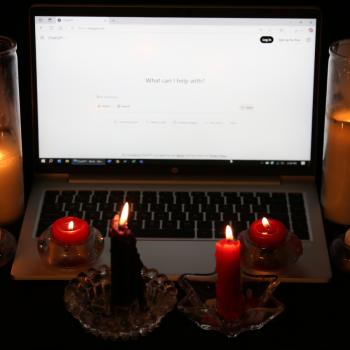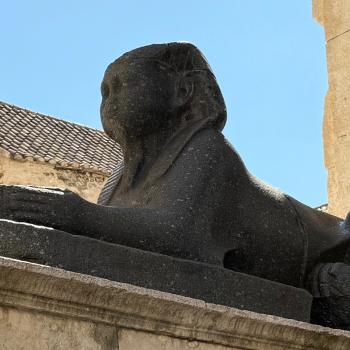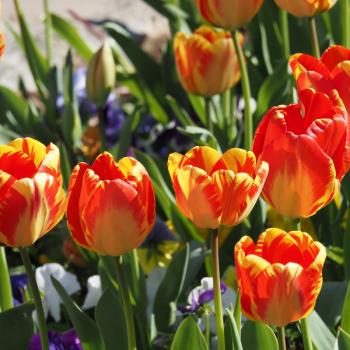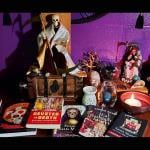Welcome to the fourth Conversations Under the Oaks, a monthly Q&A feature. I skipped March because of my travels, but I’m back this month with your chance to ask me anything.
Questions have been edited for brevity – names are used where I have explicit permission.
Ana Simoes has questions about Druid teachings in two contemporary orders. “I am currently working on both the Bardic Grade (OBOD) and the Dedicant Path (ADF). I am a polytheist, so the vision of the God/Goddess duality makes no sense, nor does the Triple Goddess (maiden, mother, and crone). I also do not believe in the Three Worlds.
Another teaching I am finding a hard time working with is the Shining Ones. I tend to use what makes sense to me and respectfully discard what does not. What I would like to know was what is your input concerning the Shining Ones.”
I don’t believe in the Three Worlds either. While the duotheist idea of God and Goddess provides a gender balance lacking in monotheism, too frequently (though not always) it degenerates into gender essentialism. And while there are numerous Triple Goddesses in our ancient traditions (the Morrigan being one of them, though She may be even more complex than that) the whole maiden-mother-crone thing is a 20th century invention.
The good news is that neither OBOD nor ADF demand fidelity to orthodox beliefs or interpretations. OBOD in particular is intentionally vague about the nature of the Gods and the universe. OBOD’s greatest value lies in the set of spiritual practices it teaches, and the journey of self-discovery and service those practices promote. OBOD is a set of spiritual technologies that will work in the context of almost any religion or religious approach.
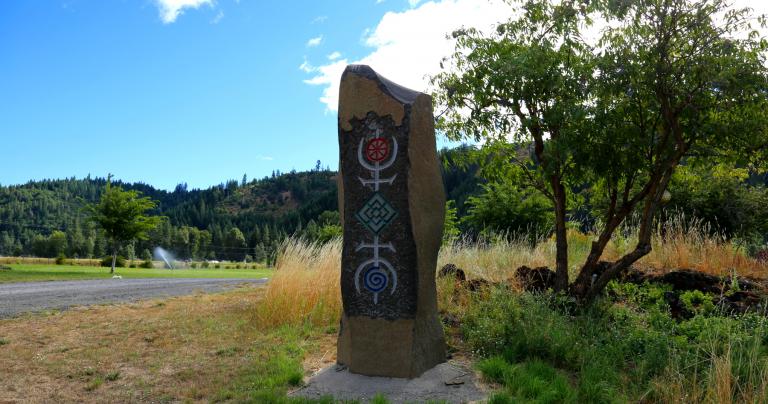
ADF is much less vague about cosmology and theology, but as they like to say, they are orthopraxic (right action) rather than orthodoxic (right belief), and there is plenty of room for differing ideas and interpretations. As a polytheist I’ve always felt very much at home in ADF, and my personal liturgy draws heavily from ADF’s Core Order of Ritual.
And that brings us to your question about the Shining Ones. Let’s start with this definition by former Archdruid Ian Corrigan:
The Shining Ones are the eldest, mightiest and wisest of the beings in the Great Weaving. The First Mother and First Father, the Triple Kingship and the Goddesses of Sovereignty, Inspiration and Bounty; the powers of Love, Artisanry and Healing; the Child of Light and Shadow; all are reflected in the many cultural pantheons of the Celtic peoples.
That sounds like Gods to me.
My understanding is that ADF’s founders wanted to avoid the baggage around the “G-word.” But also, if you read the Celtic tales, you’ll find some of the “eldest, mightiest and wisest” described as “shining ones.”
Is that because the Tuatha De Danann are part of the Fae, some of whom are also described as “shining”? Is it because the Christian monks who first committed these stories to writing would not call them Gods and grabbed a convenient term instead? Or perhaps our Celtic ancestors saw the various spiritual beings as existing on a spectrum rather than in distinct categories (an idea I’m rather fond of). We don’t know, and likely we never will.
But when I hear “Shining Ones” in ADF ritual, I think “Gods” and keep moving.
Also, when going through your Druid path studies, was there any information that clashed with your Pagan beliefs? How did you cope with that?
That happened numerous times, although none of them come to mind… which should tell you something about how much I worried about these “clashes.” Again, neither OBOD nor ADF demand fidelity to a creed or statement of belief.
When I come across new and/or challenging ideas and concepts, I give them fair consideration. OBOD was my training as a Druid, and I wanted to absorb everything they taught, even the parts I knew I wouldn’t agree with (such as much of the Anglican-influenced material of the Druid Revival). This is my heritage as a Druid, and I want to understand it as fully as I can.
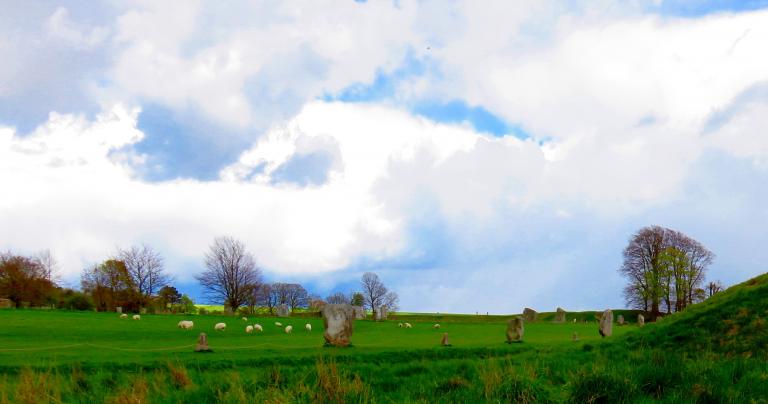
A few times I decided the OBOD concepts were right and my own thinking was wrong. Most times I simply sought to understand it without judging it. And a few times I said “no, that’s flat-out wrong.”
So I think using what makes sense and discarding what doesn’t is a good approach. Just make sure you learn the material that is part of your heritage, and that you don’t dismiss challenging ideas without giving them fair consideration.
An anonymous reader asks “I was discussing polytheism with someone and they asked if, although each God is their own separate being, there is one that rules them all, or if there is a source. Do you have an opinion on either of these things?”
Is there a source? If you believe the Universe was created then there must be a source. Our many creation myths (including the Big Bang, which is both a myth and a scientific theory) require either primordial materials or a creator or both. But these myths tend to be rather vague as to where said materials or creators came from, and the creator Gods tend to die or fade away or be conquered by their children. Think of the Titans being defeated by the Olympians, or of Ra growing old and Isis taking his power.
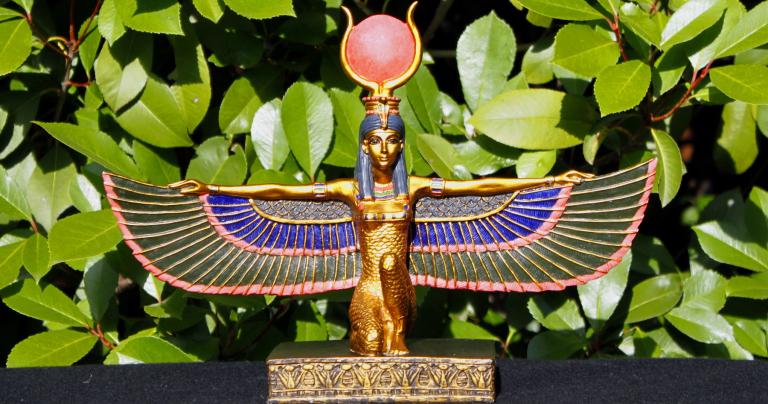
On the other hand, if you believe the Universe is a steady state then the Gods have always existed and there is no source.
Either way, the source – if it even exists – is difficult if not impossible for humans to relate to and to communicate with. But we can and do relate to and communicate with the many Gods. Those relationships are the focus of my polytheism.
Is there one God who rules them all? We have no indication – from lore or from UPG – that there is a Supreme God over all the many deities from all the many cultures of the world.
Many of the individual pantheons are hierarchical: Zeus is King of the Olympians. The Tuatha De Danann have had several kings, including Nuada, Bres, and Lugh. The Morrigan’s name translates as “the Great Queen,” though exactly what She’s queen of is somewhat uncertain. But their stories make it clear that like human kings and queens, while their power is great it is far from absolute.
Protestant Christianity – the dominant religion and religious worldview of our culture – places an inordinate emphasis on only worshipping the “Supreme God.” This concept is decidedly unhelpful in polytheist religions. As polytheists, we worship many divine beings, and we honor many other beings who are not divine… and we sometimes speculate about just how useful that “divine / not divine” categorization really is.
Anne of The Gods Are Bored has a problem. “I have a very hard time uprooting seedling trees. Can you devise a prayer or devotion I can say before, during, or after this process?”
I’m reminded of the “scientific” definition of a weed: a plant that’s in a place unfavorable to humans. We have no problem uprooting ragweed and crabgrass, but many of us of a Druid persuasion feel differently about trees. We know we’re ending what could be a long life of beauty and power.
Could be.
Different species have different reproductive strategies. Some – like humans – produce offspring one at a time (for the most part). Each individual is important to the survival of the species. Others – like dogs and cats – have small litters, knowing that some of them will die before they’re old enough to reproduce. And others – like frogs – lay hundreds of eggs, knowing that the majority of them will die early, but a critical few will live.
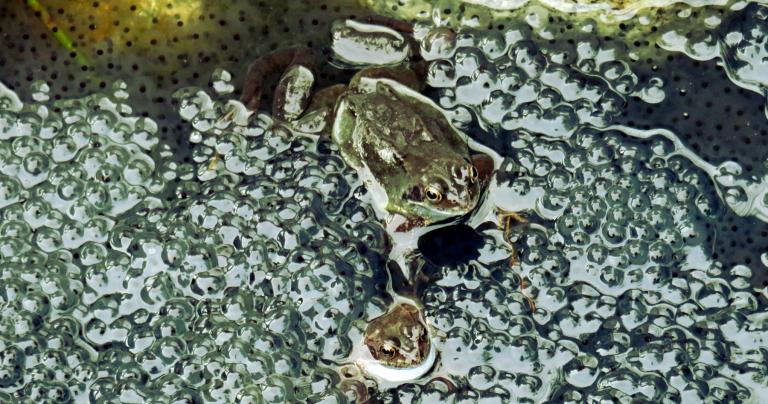
An oak tree can produce thousands of acorns in a year. Most of those will be food for squirrels and other animals. Some will sprout and take root. Some of those will end up being food, some won’t get enough water, and some will grow in areas where there’s a strong competition for sunlight. Only a tiny fraction will actually become trees.
If you didn’t uproot them (and something didn’t eat them), odds are good one of them would outgrow the others and starve them into a sunless death. Yes, you’re killing a potential tree, but if you didn’t do it, the odds are very likely that something else would.
Still, we recognize that in the moment, a seedling is a living being – a person for those of us with animist views. I see uprooting a seedling less like uprooting ragweed and more like killing an animal or a plant for food. We sacrifice an individual for our own needs, but – if we are ethical… and if we have any sense – we commit to insuring that the species will continue.
So I think a prayer for uprooted seedlings should be very similar to a prayer for a butchered chicken or for harvested grain. Something like this:
Hail to you, seedling trees.
Because of your sacrifice, these (trees, flowers, grasses, etc. – whatever is growing where the seedling is) can grow and thrive.
Your family continues (point toward an existing tree of the same species, or if there are none nearby, name a place where they grow).
May your journey to the Otherworld be safe and pleasant.
Thank you for your sacrifice
Hail and farewell.



